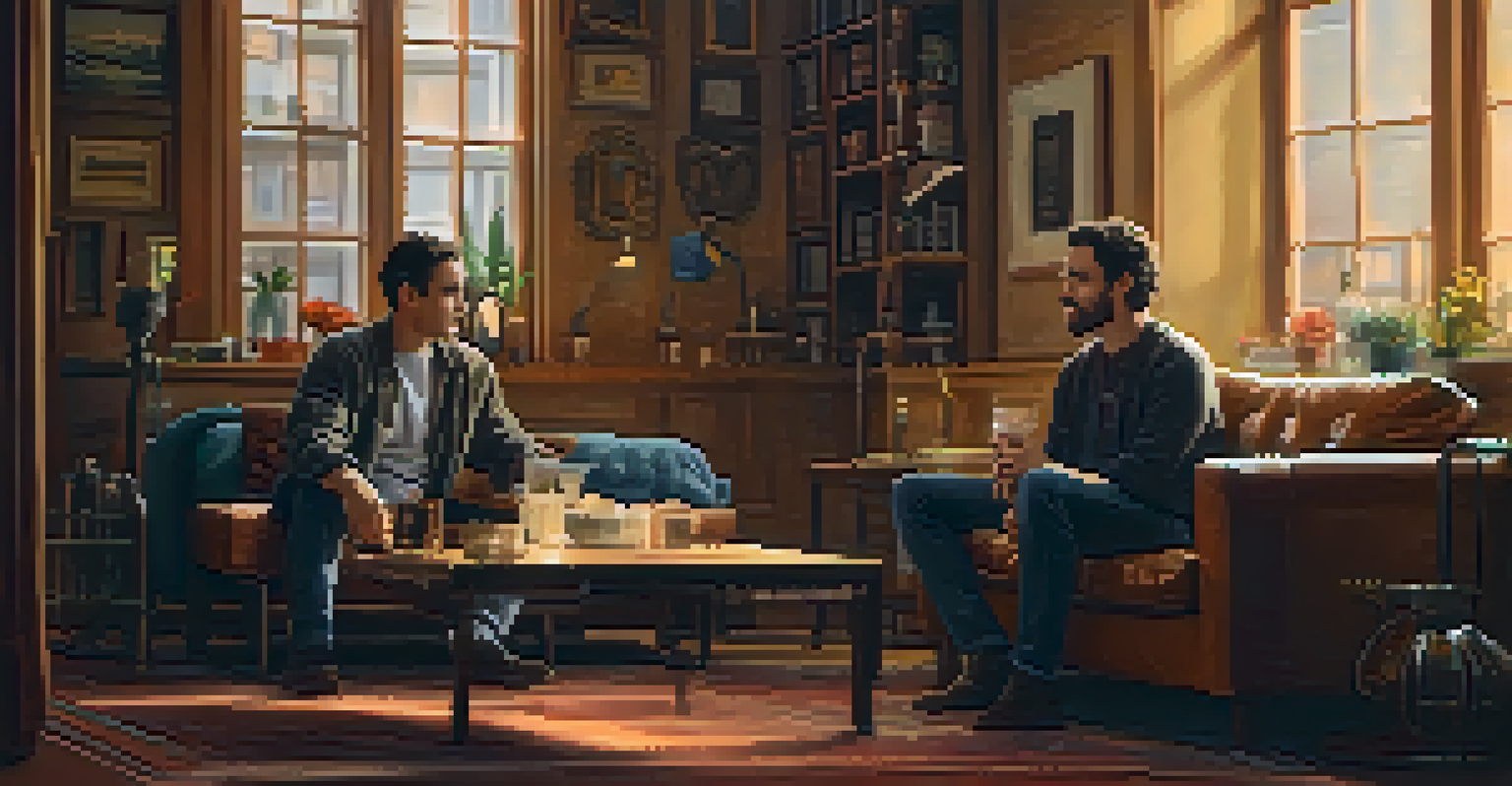The Art of Casting: Balancing Vision and Actor Selection

Understanding the Role of Casting in Film and Theatre
Casting is more than just selecting actors; it’s about shaping the entire narrative of a production. The right actor can bring a character to life, enhancing the audience's experience and creating memorable moments. When done well, casting sets the tone and establishes the emotional undercurrents that resonate throughout the piece.
Casting is a powerful tool that can elevate a script and bring it to life.
A successful casting process involves understanding the vision behind the project. Directors and producers must consider how the chosen actors align with the story’s themes and character arcs. This alignment ensures that each performance contributes meaningfully to the overall vision, making the casting choices crucial to the story’s effectiveness.
Ultimately, casting is the bridge between the script and the audience's experience. A well-cast production can elevate the material, while poor choices can undermine even the best-written stories. Thus, the art of casting is essential for both artistic integrity and audience engagement.
The Importance of Vision in the Casting Process
Vision acts as the compass guiding the casting process, shaping decisions from the outset. It encompasses not only the director's artistic interpretation but also the tone, style, and emotional depth that the project demands. A clear vision allows casting directors to identify the specific qualities they are seeking in actors, ensuring a more focused selection process.

For instance, if a director envisions a gritty, realistic portrayal, they might lean towards actors with a background in method acting. Conversely, a whimsical, stylized production could call for performers who excel in comedic timing and physicality. Clarifying this vision early on streamlines auditions and helps maintain consistency throughout casting.
Casting Shapes the Narrative
The right casting choices can enhance the story and connect deeply with the audience.
Moreover, a strong vision fosters collaboration among the entire creative team. When everyone is aligned on the project's goals, it creates a cohesive environment where actors can thrive. This shared understanding contributes to a more effective rehearsal process, ultimately enhancing the final performance.
Strategies for Selecting the Right Actors
Selecting actors requires a blend of intuition, experience, and strategic planning. One effective strategy is to hold auditions that allow actors to showcase their versatility. This not only highlights their range but also provides insight into how they interpret the character, revealing potential strengths and weaknesses.
The actor's job is to bring the character to life, to make the audience believe in them.
Another approach is to consider the chemistry between actors. Sometimes, the best performances emerge from unexpected partnerships, so testing various combinations during auditions can lead to surprising discoveries. These chemistry reads can help ensure that the actors work well together, fostering an authentic connection on stage or screen.
Additionally, casting directors should be open to unconventional choices. While traditional casting may favor well-known names, fresh faces can bring unique energy and perspectives that resonate with audiences. Embracing diversity in casting not only enriches the storytelling but also reflects the varied experiences of the audience.
The Role of Auditions in the Casting Process
Auditions are where the magic begins, allowing actors to breathe life into characters in real time. They serve as a crucial testing ground, giving directors the chance to witness performances firsthand. A successful audition not only showcases an actor’s skills but also reveals their ability to embody the character’s essence.
During auditions, actors must be prepared to take direction and adjust their performances. This adaptability can be a significant factor in a casting decision, as it demonstrates an actor's willingness to collaborate and evolve with the vision of the production. Directors often look for this quality, as it contributes to a dynamic rehearsal environment.
Vision Guides Actor Selection
A clear artistic vision helps casting directors identify the qualities they need in actors.
Moreover, auditions can provide valuable insights into an actor’s work ethic and professionalism. Simple gestures, such as punctuality and preparation, can speak volumes about an actor's dedication. These subtle indicators can ultimately influence the casting decision, helping to build a well-rounded and committed cast.
The Impact of Chemistry Reads on Casting Decisions
Chemistry reads are an essential component of the casting process, allowing directors to gauge the interactions between potential cast members. These sessions help determine whether actors can create a believable relationship that enhances the narrative. After all, the characters must connect in a way that feels authentic to the audience.
During chemistry reads, directors often observe how actors respond to one another’s energy and choices. This dynamic can reveal the depth of their performances and how well they complement each other. A strong chemistry can elevate a production, making it more engaging and relatable for the audience.
Furthermore, chemistry reads can spark new ideas and interpretations of the characters. Sometimes, actors bring unexpected nuances to their interactions, inspiring creative directions that hadn’t been considered. This collaborative spirit can lead to an enriched storytelling experience, ultimately benefiting the entire production.
Navigating Challenges in the Casting Process
Every casting director faces challenges, from tight deadlines to the pressure of finding the perfect fit. One common hurdle is balancing the vision with the practicalities of actor availability and budget constraints. This often requires creative problem-solving and flexibility to ensure the best possible outcome without compromising the overall vision.
Additionally, casting directors may encounter moments of indecision or conflicting opinions within the creative team. Open communication becomes paramount in these situations. By fostering an environment where everyone feels heard, directors can navigate disagreements and arrive at a consensus that aligns with the project’s goals.
Chemistry Boosts Performance
Chemistry reads reveal how well actors connect, which can significantly impact the production's success.
Lastly, the emotional toll of casting decisions can be significant. Knowing that the choices made will impact actors’ careers and the success of the production can weigh heavily on casting directors. Practicing self-care and maintaining a clear perspective on the artistic mission can help ease this burden and keep the focus on the creative journey.
The Evolution of Casting in the Digital Age
The digital age has transformed the casting landscape, introducing new tools and platforms that streamline the process. Online auditions and casting calls have made it easier for actors to submit their work from anywhere, providing a wider pool of talent for directors to choose from. This shift has democratized casting, allowing fresh voices to emerge in the industry.
Moreover, social media plays a pivotal role in how casting decisions are influenced. Directors and casting agents can now connect with actors directly, view their previous work, and gauge their popularity. This accessibility can lead to more informed decisions, as casting directors are better equipped to understand the market and audience preferences.

However, the digital landscape also poses challenges, such as overwhelming amounts of submissions. Sifting through countless videos and profiles requires a keen eye and efficient systems. Adapting to these new tools while maintaining the art of casting is a balancing act that continues to evolve with technology.